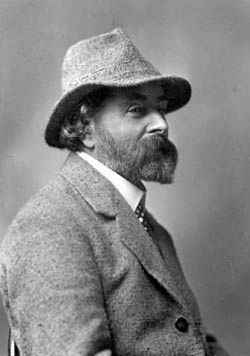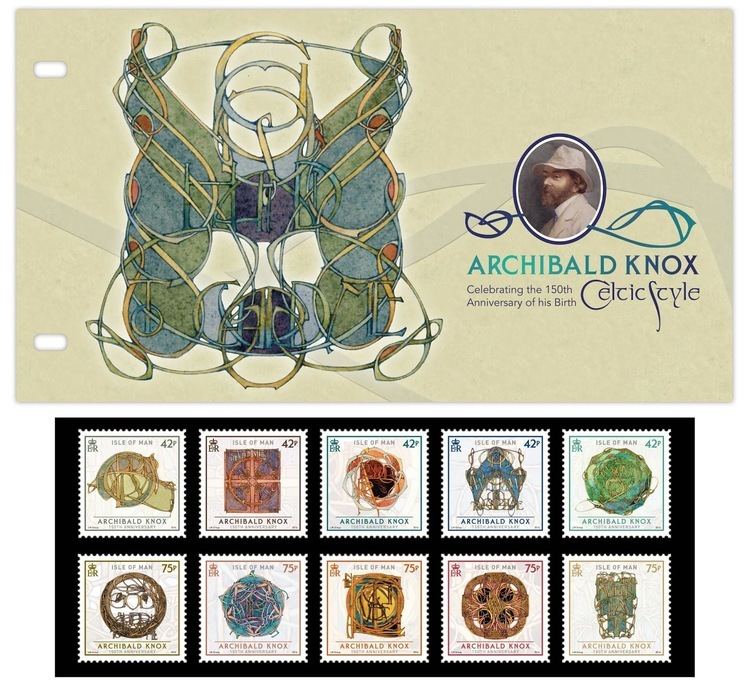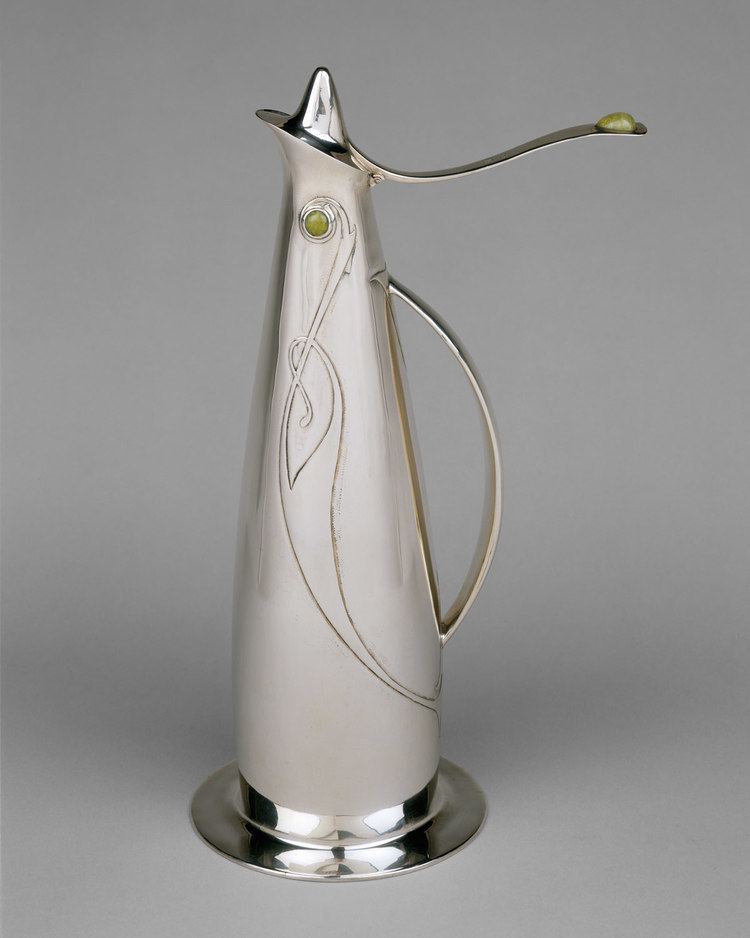Name Archibald Knox | Role Designer | |
Died February 22, 1933, Braddan, Isle of Man | ||
Archibald knox beauty modernity part 1 the ghost designer by anthony bernbaum
Archibald Knox (9 April 1864 in Cronkbourne near Tromode, Isle of Man – 22 February 1933 in Douglas, Isle of Man), was a Manx designer of Scottish descent. He is best known as being Liberty's primary designer at the height of their success and influence upon UK and International design (to the extent that in Italy, Art Nouveau was known as Stile Liberty). Knox's pioneering and prolific work bridged the Arts and Crafts Movement, Celtic Revival, Art Nouveau, and Modernism.
Contents
- Archibald knox beauty modernity part 1 the ghost designer by anthony bernbaum
- Archibald knox beauty modernity part 9 knox jewelry and pewter by anthony bernbaum
- Family background
- Education
- Career
- Death and Commemoration
- Archibald knox beauty modernity part 10 knox s legacy by anthony bernbaum
- References

Knox's hundreds of designs for Liberty's made his style widely known, (though not his name, as Liberty's kept their designers anonymous). Most of his work for Liberty's was for the Tudric (pewter) and Cymric (precious metals) ranges. The gravestone of Liberty's founder, Arthur Lasenby Liberty, was designed by Knox.

His design talent covered a wide range of objects, ornamental and utilitarian, and included silver and pewter tea sets, jewellery, inkwells, boxes, gravestones, watercolours, graphic designs, calligraphy, a house design, fonts and even bank cheques.

Archibald knox beauty modernity part 9 knox jewelry and pewter by anthony bernbaum
Family background
Knox's father, William Knox, was living in Kilbirnie when he married Ann Carmichael from Lismore Island in 1853. They had moved to the Isle Of Man in 1856 with their firstborn, Robert, where William "an exceptionally ingenious cabinet and machine-maker, joined Moore’s Tromode Works, makers of high quality herring nets and sailcloth." William's sister Margaret had been the first Knox to move to Man when she married a Manx fisherman, William Callister in 1856. William Knox later started his own firm "William Knox’s Engineering Works" and was joined in his enterprise by four of his sons - Archibald pursuing his own career in art. Besides running a successful steamboat and ferry business, the Knox family mechanised the local fishing fleet, were pioneers in industrial electric lighting on Man and introduced the first motor car to the island. Knox's engineering background may have influenced his design process in that his metalwork designs were produced in the style of ready-to-engineer blueprints.
Education
Archibald, the Knoxs' 5th child (and 5th son), started his schooling at St. Barnabas Elementary School, and then attended Douglas Grammar School. At the age of 16 in 1880 Knox enrolled at the newly-opened and innovative Douglas School of Art. The students there considered themselves 'venturesome modernists'. In 1889 Knox was awarded his Art Master's Certificate. During his youth Knox developed a lifelong interest in Celtic art, particularly the carved Celtic and Norse stone crosses on the Isle of Man which date from c.500AD to c.1200AD. In 1893 'The Builder' published Knox's Article, 'Ancient Crosses in the Isle of Man' .
Career
Knox starting teaching at Douglas School of Art in 1884, while still a student. In 1896 or 1897 Knox was working for / studying with the pioneering designer Christopher Dresser in London. In 1897 he started teaching at Redhill School of Art where his friend A.J.Collister was principal, leaving with him for the Kingston School of Art in 1899. In 1897 Knox also began designing for the Silver Studio. Then, from 1900 to 1904 Knox returned to the Isle of Man, and produced over 400 designs directly for Liberty's of London. Then he returned to teach at Kingston Art School (and Wimbledon Art School 1906/7), again following his friend A.J.Collister ,. In 1913 he spent a year in the United States, and on his return to Man acted as a censor of internees' letters during World War I. In 1919, after the War, he again took up teaching art at some of the Isle of Man's schools until his death. Knox also produced a variety of design work on the Island for publications, illuminations, and gravestones.
Knox's great late work was an illuminated manuscript titled 'The Deer's Cry'. Each page is a complex interlaced illumination of a line of the prayer known as 'The Deer's Cry' or 'Saint Patrick's Breastplate' . The style and imagery of each page reflects the content of each line of the prayer .
Death and Commemoration
Knox died of heart failure in 1933 and was buried in Braddan Cemetery. His epitaph reads "Archibald Knox. Artist. A humble servant of God in the ministry of the beautiful".
The Archibald Knox Society was founded in 2006. The aim of the Society is the education of the public worldwide in relation to all matters concerning the legacy of the Manx designer and artist Archibald Knox. To this end the Society has given lectures, (including an international tour), published journals and helped to organise exhibitions.
To celebrate the 150th Anniversary of Knox's birth, the Isle of Man Post Office issued a set of 10 stamps featuring his designs, released in April 2014. Also in 2014, an exhibition exploring the work of Knox and his Celtic contemporaries ("Celtic Style") was held at the House of Manannan, Peel, Isle of Man. A commemorative concert was held at Peel Cathedral featuring newly composed harp music and also including Manx Gaelic choir music. An exhibition of Knox's work was held at Olympia Exhibition Centre, London.
